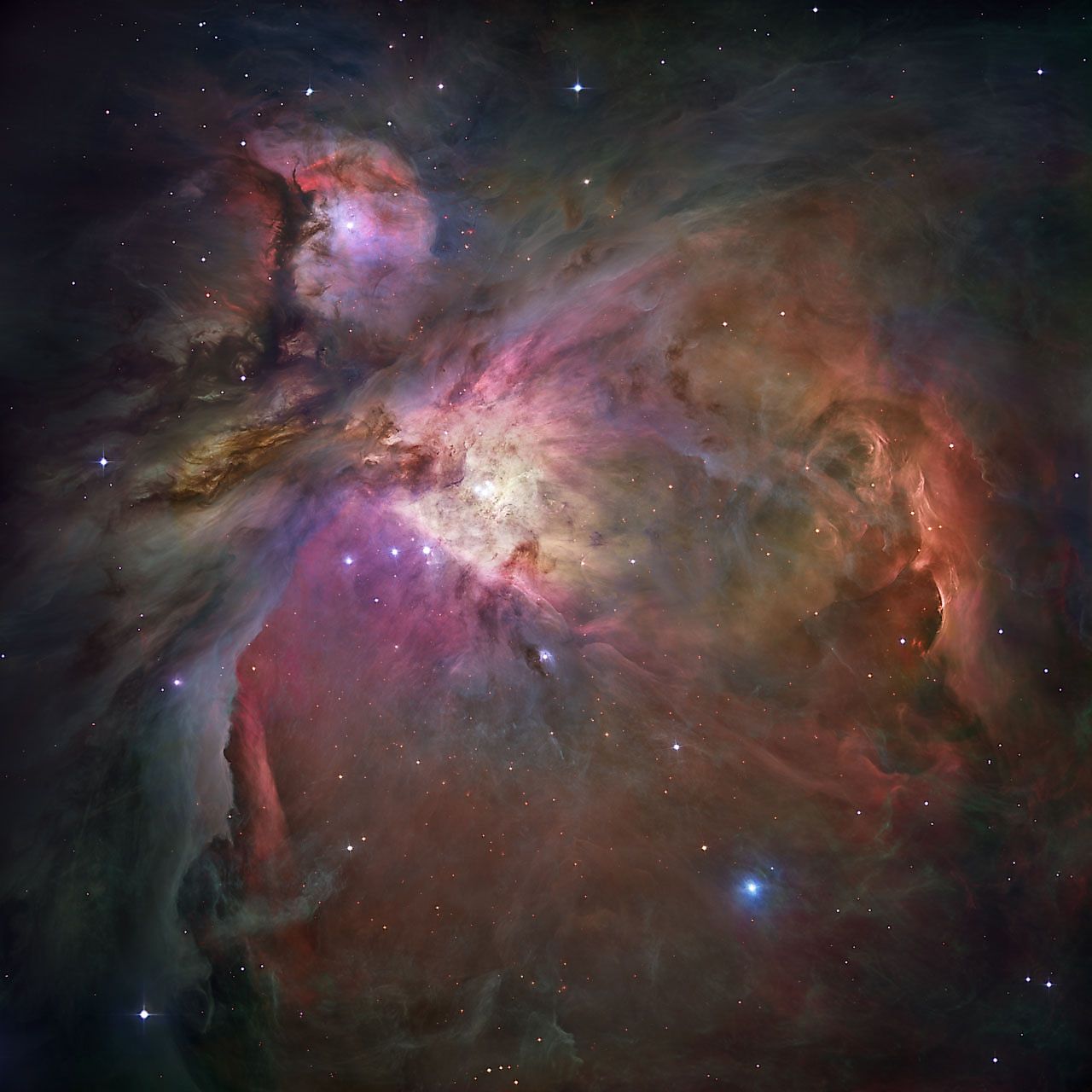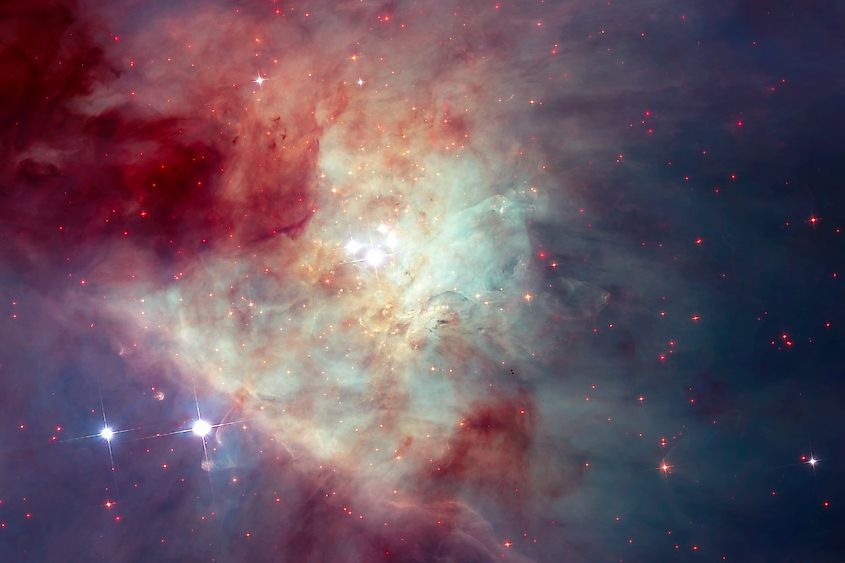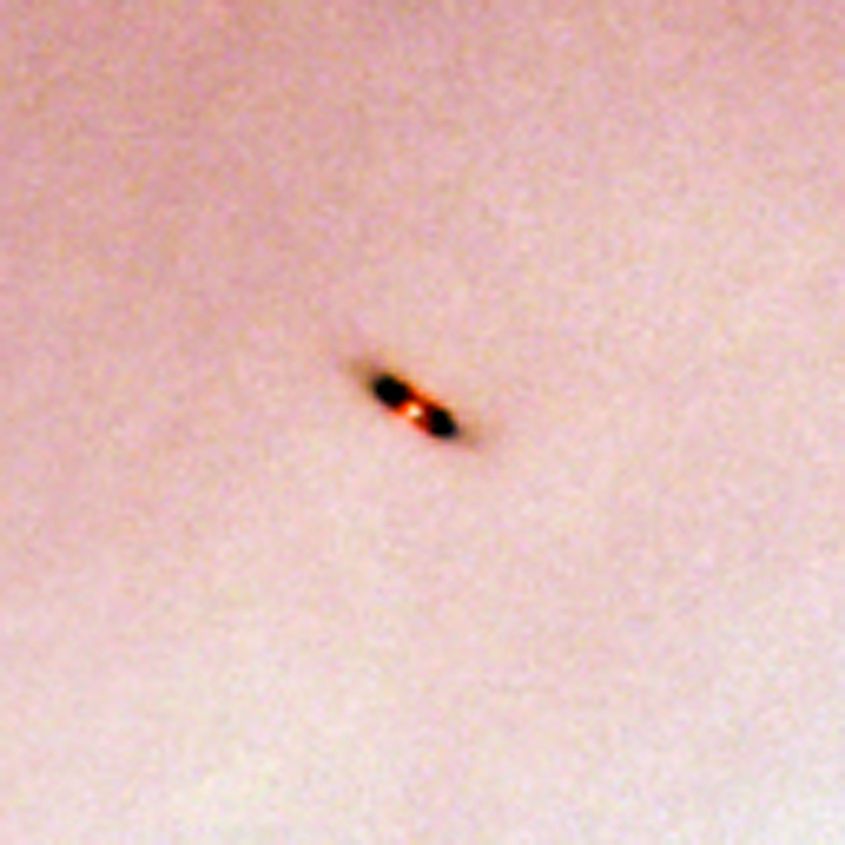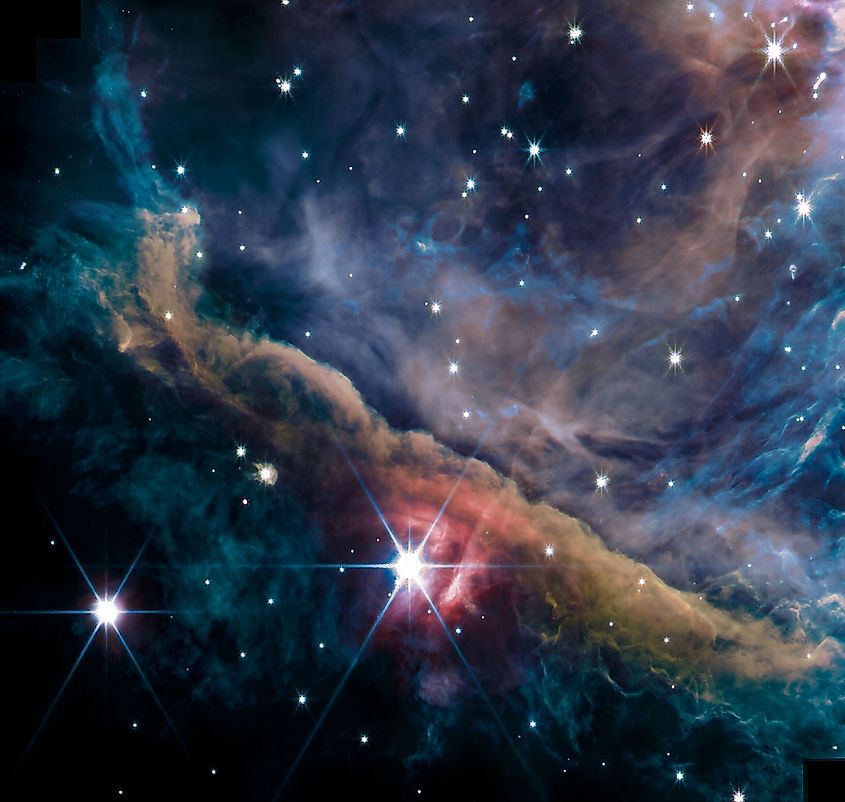
Latest James Webb Image Shows The Orion Nebula
The Orion Nebula is one of the most popular targets in the night sky. Located just below Orion’s Belt in the constellation Orion, the Orion Nebula is one of the only nebulae in our galaxy that is visible to the naked eye. The Orion Nebula is also one of the most active star-forming regions in our galaxy, and it is located 1,344 light years away, making it the closest star-forming region to our solar system. Given its relatively close proximity to us, the Orion Nebula is one of the most studied structures in our galaxy, and it was a very popular target for the Hubble Space Telescope. Now, NASA’s latest space telescope, James Webb, has taken its first images of the Orion Nebula, showing it in unprecedented detail.
Size, Age, and Composition

The Orion Nebula is a vast structure of star-forming material. The entire structure has a diameter of 24 light years. Travelling at the speed of light, it would take you 24 years to go from one side of the Orion Nebula to the other. As a reference, the nearest star to our solar system, Proxima Centauri, is 4.2 light years away. The Orion Nebula is nearly six times larger than the distance between the sun and its nearest star.
The Orion Nebula is surprisingly young in comparison to the Milky Way. The Orion Nebula has an estimated age of only three million years, which is rather young when compared to the age of the Milky Way, which is estimated to be around 12-billion years old. Large nebulae like the Orion Nebula begin their lives as collections of cold blobs of hydrogen. These small hydrogen gas clouds are bound together by gravity, and over time, their combined gravity brings in more material. Over time, these clouds of hydrogen collapse to form a multitude of stars. In the case of the Orion Nebula, the vast majority of the stars within it are high mass blue stars, most of which formed within the last 300,000 years. As a star-forming region, the Orion Nebula is primarily composed of hydrogen, along with trace amounts of other elements and compounds.
A Nursery of Stars and Planets

As an active star-forming region, scientists have uncovered hundreds of stars that are still undergoing formation. Vast clouds of hydrogen gas are currently collapsing under their own gravity, leading to the formation of hundreds of individual stars. Interestingly, in addition to star-formation, astronomers have also found over a hundred young stars surrounded by protoplanetary disks. It is within these disks that planets are born, and so astronomers are quite literally seeing some of the earliest stages of solar system formation.
James Webb Image

The most recently released images from the James Webb Space Telescope (JWST) have revealed the Orion Nebula in the highest resolution ever seen. However, the images from Webb do not show the entire structure of the Orion Nebula. Rather, researchers focused on a specific section of the Orion Nebula called the Orion Bar. The Orion Bar itself contains a multitude of forming stars and solar systems, as well as some high mass blue stars that are slowly eroding the Bar through their high energy radiation.











